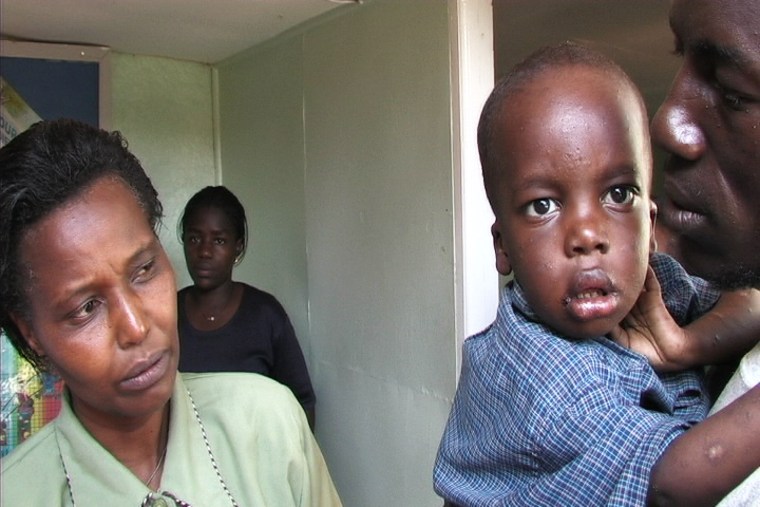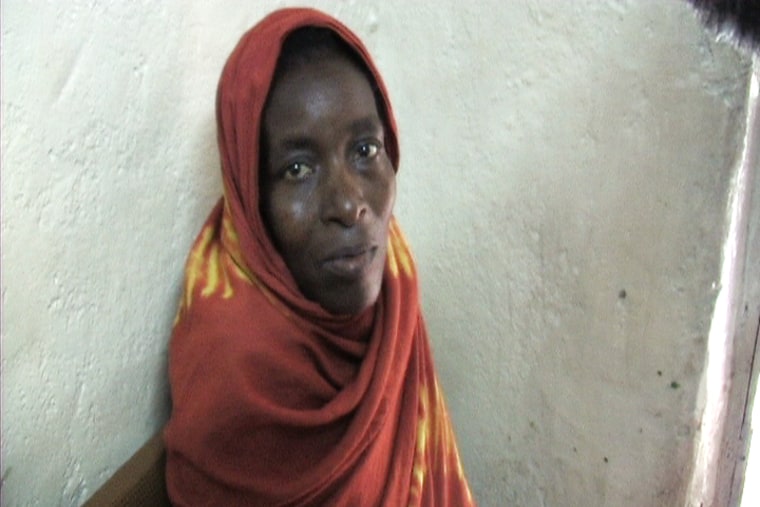NAIROBI, Kenya — A bumpy dirt road winds down into the Kibera slums, like a jarring descent into hell.
The change from modern, thriving city to decrepitude is jarring. In seconds you are transported to the sort of place most people in the western world will never experience.
This is Nairobi's largest slum, home to more than 1 million people.
The children are filthy. They play near, if not in, open sewer trenches which run, like sidewalks, along the side of the roads. The adults sit and watch from wobbling, wooden shacks covered by rusty tin roofs. Some of those shacks are homes. Others are storefronts with hand-painted signs.
One of the many mom-and-pop butcher shops here specializes in cow intestines. The intestines hang from the store window. For paying customers, the butcher slices pieces of intestine right from the window display. He weighs the pieces on a scale where flies cover it, before he can put it in plastic wrap.
It is no wonder diseases like dengue fever, malaria and tuberculosis thrive here. But they are not Kibera’s biggest disease problem, HIV/AIDS is.
Mother of seven lucky to receive treatment
Directly across from the butcher shop is the Makina Community Development Project. This medical clinic specializes in HIV/AIDS treatment. When we visited, 50-year-old Peres was undergoing treatment.
Peres is the mother of seven children, all of whom have somehow miraculously escaped contracting HIV.
In a mix of Swahili and broken English she said, “Luckily I haven’t been too sick not to take care of them [her children].”
Peres said she got HIV from her husband who died from the disease a few years ago. “Sometimes I feel good. Sometimes I feel bad,” she said. But she admitted that the antiretroviral drugs she recently started taking have helped.
Peres is one of the lucky ones. The Makina clinic found a non-governmental organization (NGO) willing to supply her with expensive antiretroviral drugs. Most people here cannot afford the life-sustaining drugs, or don’t have access to them at local clinics.
Clinic without access to antiretrovirals
The Thika Nursing Center, a suburban Nairobi clinic is one example. Thika relies entirely on private donors. So far it has not qualified for funding from international organizations like the U.S.-based, “President’s Emergency Fund for AIDS Relief” called PEPFAR.
When we visited Thika, we met at least a dozen patients, like 2-year-old Ian, who was in the last stages of HIV/AIDS. Antiretrovirals were not available to help.
“We’ve contacted some of the organizations to get the arv’s [antiretrovirals] but this is our problem. We can’t afford to get the drugs,” said Dorcas Githinji, the center’s coordinator.

There is no running water, no electricity and no other modern conveniences.
According to Githinji, 70 percent of the residents are HIV positive. She says most of the adults are widowed because of the disease.
In addition, the majority of the children are orphaned, or are being cared for by their grandparents.
“I sleep in this bed with my two granddaughters. My grandsons sleep in that bed,” said Wamaitha Wa Kagura, as she showed us the inside of her tiny one room mud hut. Both of Wa Kagura’s daughters died of AIDS. The roof of her hut leaks and the mud walls are nearing collapse. The hut is reinforced with plastic bags and twigs.
I visited Wa Kagura with several representatives from Abbott, the Chicago-area healthcare company.
After seeing Wa Kagura’s living conditions, the Abbott Kenya affiliate agreed to pay for the supplies and construction of a new home. Wa Kagura’s new home was built in one day by the male elders in the village, and only cost $450.
But, as kind a gesture as that was, it does not even begin to solve the monumental problems facing Wietethe and similar villiages all over Africa.
By the time we left Nairobi, Ian had died. His HIV-infected father’s health was deteriorating.
Most of the 1 million people living in Kibera have not even been tested for HIV.
And, Githinji, at the Thika Nursing Clinic was contemplating how to tell a 10-year old girl that she too was HIV positive.
Don Lemon is an anchor for WMAQ, the NBC News Chicago affiliate. He is traveling in Rwanda, Kenya, Malawi and Tanzania to do some volunteer work and learn more about the HIV/ AIDS crisis in Africa first hand. To read more about his experience, please see his blog: "Journey to Africa."
